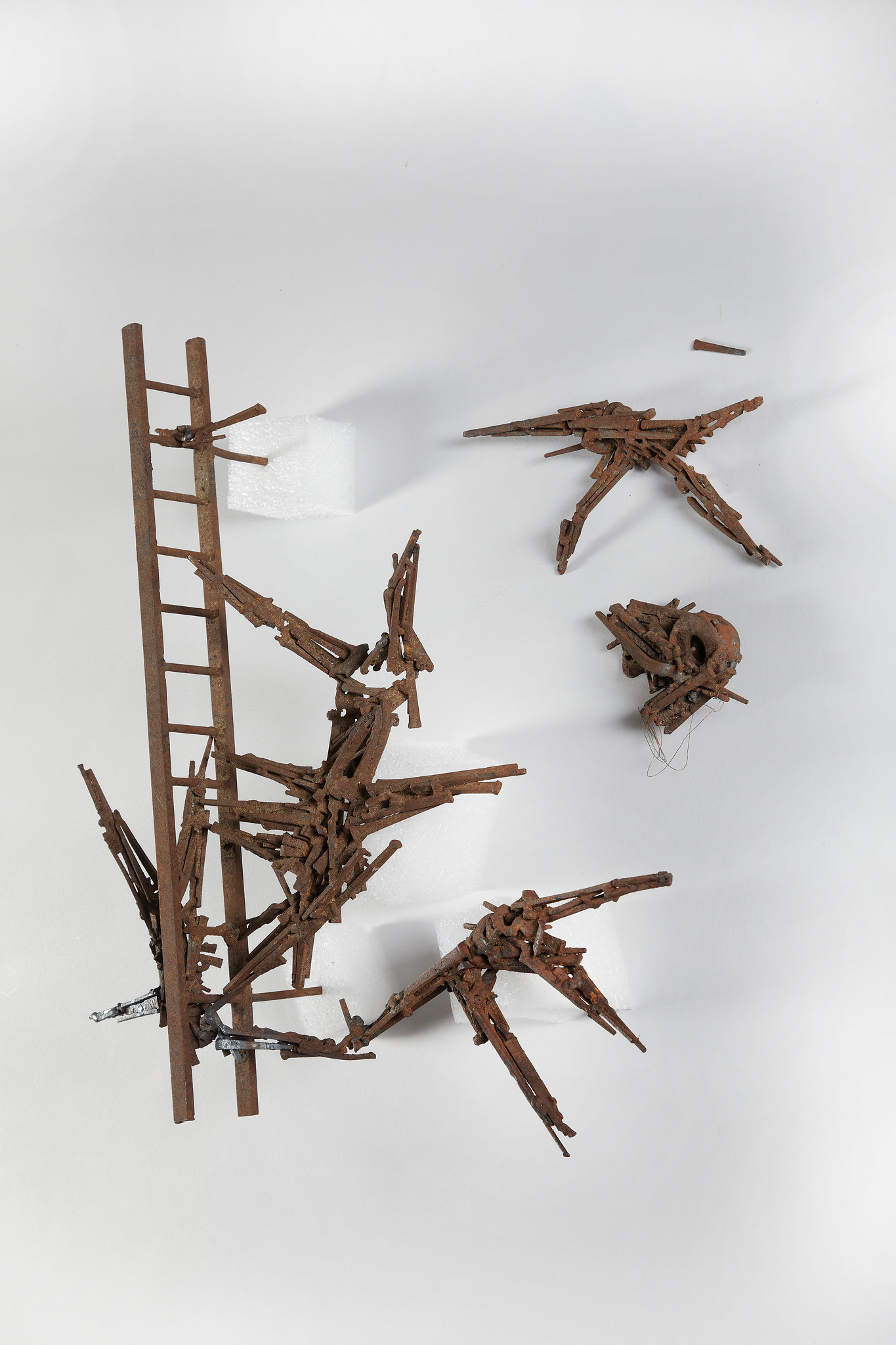Following in the wake of Abstract Expressionism, Mallary was a prominent member of the Neo-Dada or Junk Art movement who helped grow American Sculpture, and a pioneer in computer art. His 3-D works were primarily created from found objects and detritus, encased in liquid plastics and resin. As one of the first people to recognize the artistic potential of the computer, his work was included in the seminal exhibition Cybernetic Seredipity in 1968 at the ICA, London.
He was also included in two MoMA exhibitions, received a Guggenheim award and exhibition, and was shown at the Whitney and LACMA, among other institutions.
Robert Mallary next to one of his works, photo courtesy of the artist’s estate.
The largest challenge our conservators faced in treating Mallary’s work was the decrepit aesthetic of the artist’s intent. The Mallary estate is currently represented by The Mayor Gallery. The piece shown here is the maquette for Cliffhangers which was one of the works along with Warhol’s 13 Most wanted Men and Rosenquist’s mural shown at the Philip Johnson’s New York State Pavilion for the World's Fair in Queens, NY in 1964.
The Mayor Gallery on Mallary’s evolution as an artist, as expressed through medium:
“Experimenting as early as the 1930s with plastics, he began in the mid 1950s making reliefs of sand and straw mixed with polyester resin. The dark and moody reliefs alluded to the region’s landscape and as with most of his oeuvre had undercurrents of doom, both in the imagery and in the titles sourced from classical mythology, political and philosophical ideas. After discovering the health risks of resin he became interested in the computer's potential as an artistic tool. In 1968, he exhibited in London a work that is considered one of the first computer-designed sculptures. “
The Mallary pieces brought to The Center had been exposed to multiple damaging factors, including humidity, moisture, temperature instability, and pests, among others.
Untitled Sculpture prior to treatment, assembly, and installation.
The most significant consideration in the treatment of these works was preservation for future storage in a controlled environment. The computer drawings were first surface cleaned using conservation methods. Next, we housed the computer drawings in archival framing with Optium glazing to provide protection against UV rays.
One of our Paper conservators working on a Computer Drawing.
Computer Drawings after receiving treatment.
The sculpture was also surface cleaned using conservation-grade materials and cotton swabs.
Untitled Sculpture was carefully cleaned prior to assembly.
Before installation in our EXPO booth, we tested the wall mount at The Center.
Untitled Sculpture, fully conserved and installed.
Installing Mallary’s work at our booth at EXPO.










